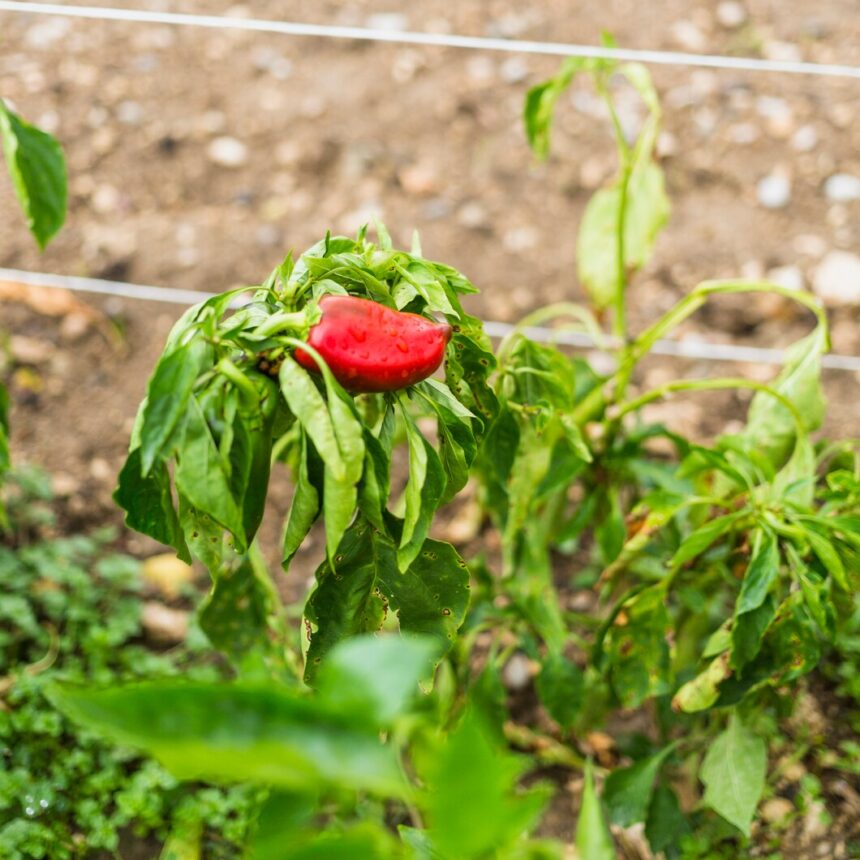Peppers are a popular and versatile vegetable grown in many home gardens and commercial farms. However, like all crops, peppers are susceptible to diseases that can significantly impact their health and productivity. One such disease is the mosaic virus, which affects peppers and other members of the Solanaceae family, including tomatoes and eggplants. Recognizing the early signs of mosaic virus infection is crucial for effective management and prevention of further spread. Here are ten early signs that your peppers may have mosaic virus:
1. Mottled Leaves
One of the most characteristic symptoms of mosaic virus is mottled or streaked patterns on the leaves. Infected pepper plants may exhibit light and dark green patches, yellowing, or irregular discoloration, giving the foliage a mosaic-like appearance.
2. Stunted Growth
Mosaic virus can stunt the growth of pepper plants, causing them to be smaller and less vigorous than healthy plants. Infected plants may exhibit reduced leaf size, shorter internodes (the spaces between leaves), and overall poor development compared to unaffected plants.
3. Leaf Curling
Another common symptom of mosaic virus infection is leaf curling or distortion. Infected pepper plants may have leaves that curl upwards or downwards along the edges, giving them a distorted or puckered appearance.
4. Reduced Yield
Mosaic virus can significantly reduce pepper yields by affecting flower production and fruit set. Infected plants may produce fewer flowers, and those that do form may drop prematurely or fail to develop into fully mature fruits, resulting in reduced yield and quality.
5. Streaked or Deformed Fruit
In addition to affecting leaves, mosaic virus can also cause symptoms on pepper fruits. Infected fruits may exhibit streaking, mottling, or distortion, with irregular patches of color or raised bumps on the surface. These symptoms can render the fruits unmarketable or unsuitable for consumption.
6. Vein Clearing
Mosaic virus can cause clearing or lightening of the veins on pepper leaves, particularly along the midrib and major veins. This symptom is often accompanied by mottling or discoloration of the surrounding leaf tissue and is a characteristic feature of mosaic virus infection.
7. Necrotic Lesions
Severe cases of mosaic virus infection can lead to the development of necrotic lesions or dead tissue on pepper leaves. These lesions may appear as dark brown or black spots surrounded by yellowing or chlorotic tissue and can further weaken the plant’s health and productivity.
8. Viral Inclusion Bodies
Under a microscope, mosaic virus infection may be confirmed by the presence of characteristic inclusion bodies within infected plant cells. These inclusion bodies, composed of viral particles, are often visible as dark or opaque structures when leaf tissue is examined using specialized staining techniques.
9. Systemic Spread
Mosaic virus is a systemic disease, meaning it can spread throughout the entire plant once it becomes infected. As the virus replicates and moves within the plant, symptoms may become more widespread and severe, affecting multiple leaves, stems, and fruits.
10. Vector Transmission
Mosaic virus can be transmitted by several vectors, including aphids, thrips, and contaminated tools or equipment. Infected plants may serve as reservoirs for the virus, which can be easily spread to healthy plants through feeding or physical contact with vectors.
Early detection of mosaic virus infection is essential for minimizing its impact on pepper crops and preventing further spread to neighboring plants. By recognizing the early signs of mosaic virus, growers can implement timely management strategies, such as rogueing infected plants, controlling vectors, and practicing good sanitation practices, to mitigate the spread of the disease and protect crop health and yield. Additionally, planting resistant pepper varieties and implementing crop rotation can help reduce the risk of mosaic virus infection and ensure a successful harvest of healthy, productive peppers.
Join 'Farmers Mag' WhatsApp Channel
Get the latest Farming news and tips delivered straight to your WhatsApp
CLICK HERE TO JOIN






